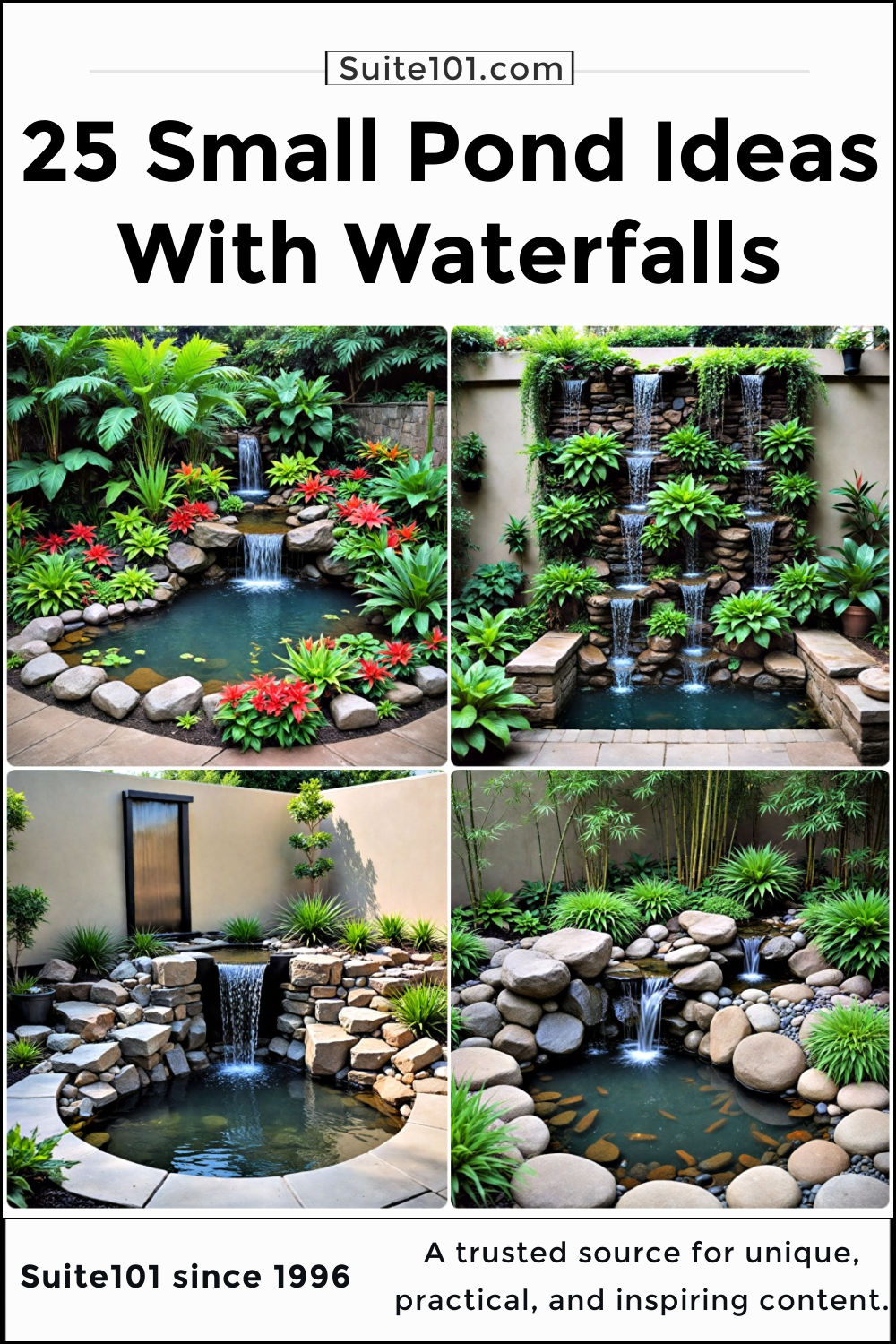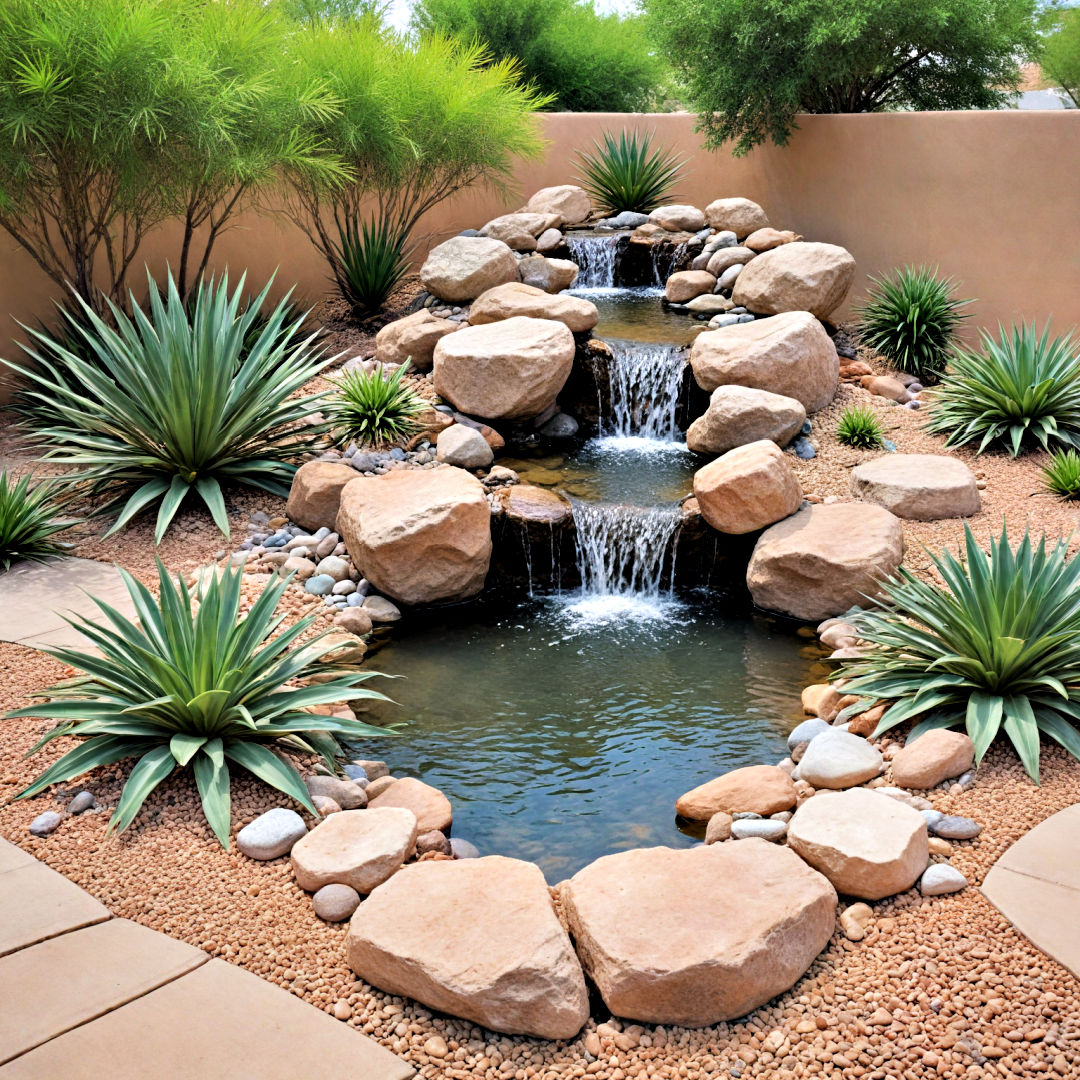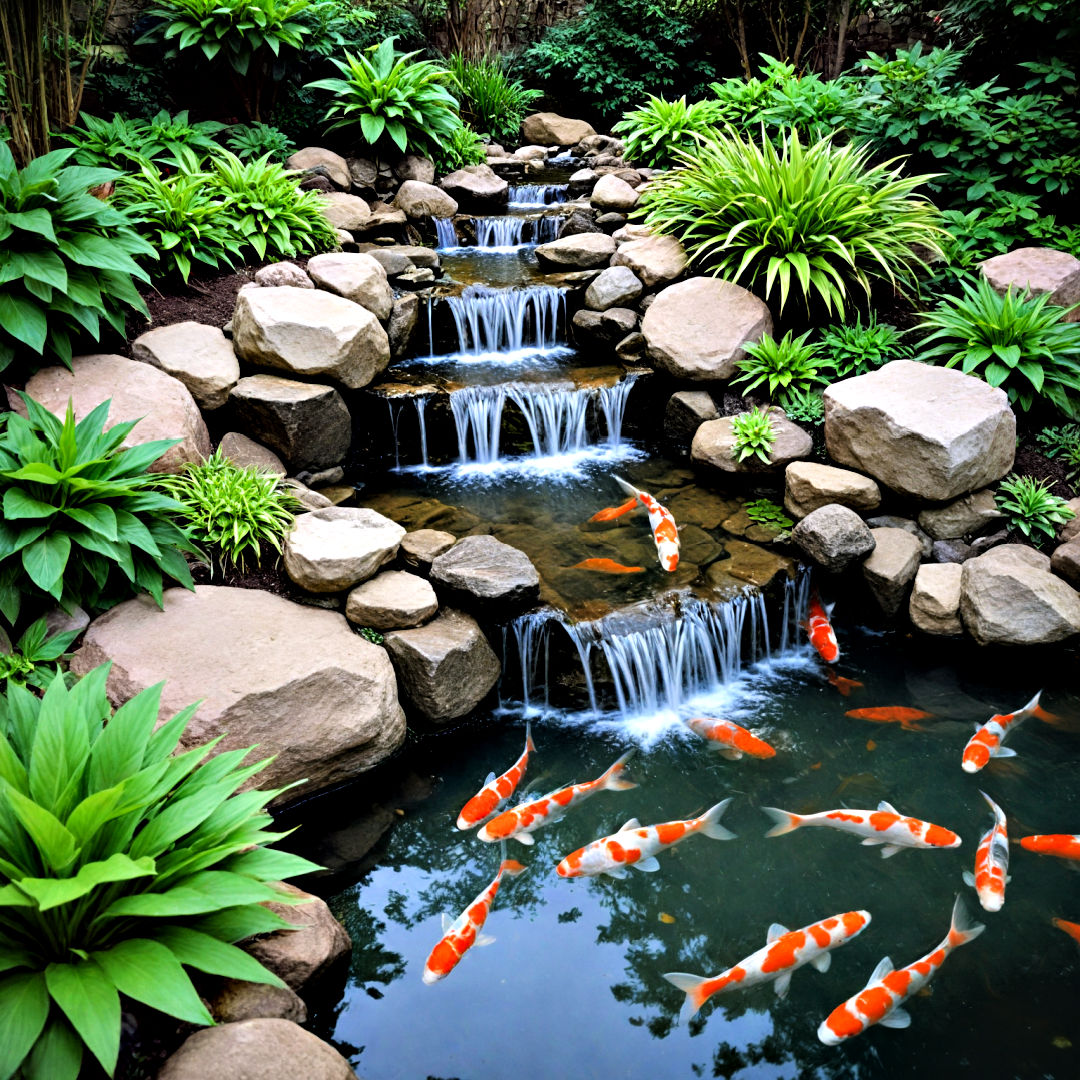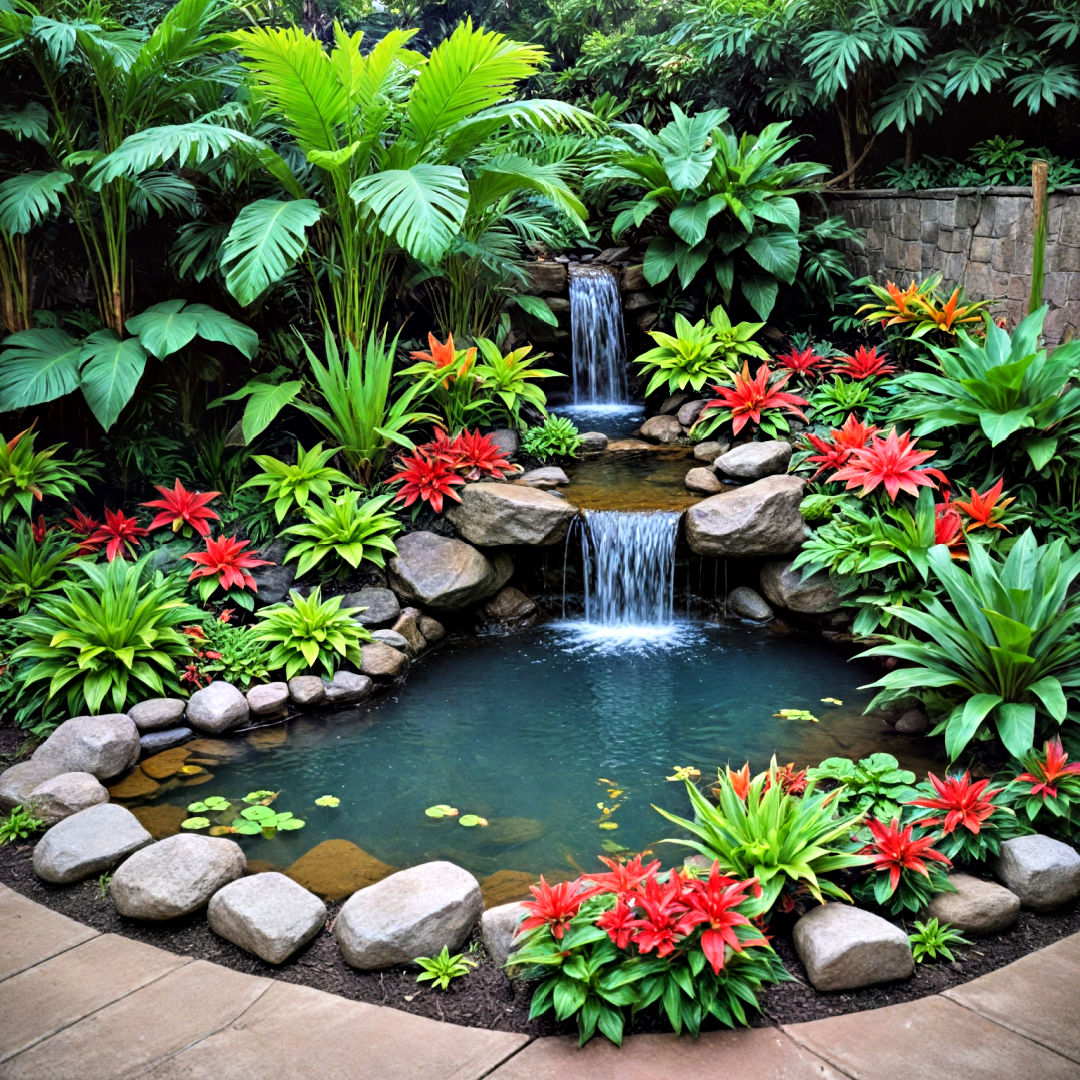Mini Waterfall Magic: Pond Paradise
Mini Waterfall Magic: Pond Paradise
Creating a tranquil oasis in your backyard doesn't require acres of land and a hefty budget. The magic of a mini waterfall cascading into a small pond can transform even the most modest space into a private sanctuary, a haven for relaxation and contemplation. This comprehensive guide explores the design, construction, and maintenance of your own miniature water feature, turning your dreams of a pond paradise into a captivating reality.
Part 1: Designing Your Dream Mini Waterfall and Pond
Before diving into the construction phase, meticulous planning is crucial. Consider these key elements:
1. Location, Location, Location:
The placement of your mini waterfall and pond significantly impacts its aesthetic appeal and functionality. Choose a spot that:
- Receives ample sunlight: Sufficient sunlight is essential for the healthy growth of aquatic plants, which play a vital role in maintaining water quality. However, avoid placing it in direct, scorching sunlight all day, as this can lead to excessive evaporation and algae growth.
- Offers privacy: Ideally, position your water feature where it's visible from your home or patio but shielded from prying eyes. Strategic planting can enhance privacy.
- Provides easy access: Consider the proximity to water sources and power outlets, making maintenance and cleaning convenient.
- Is aesthetically pleasing: The backdrop of your water feature contributes to its overall charm. Consider integrating it with existing landscape features like rocks, trees, or a patio.
2. Size and Scale:
The size of your mini waterfall and pond should be proportionate to your available space and budget. A small pond, even as small as 2-3 feet in diameter, can accommodate a charming mini waterfall. Overly ambitious projects in limited spaces can look cramped and unnatural.
3. Waterfall Style:
Explore various waterfall styles to find the perfect fit for your design vision. Consider:
- Tiered waterfalls: Create a dramatic effect with multiple levels, adding visual interest and sound variations.
- Sheet waterfalls: These create a smooth, flowing curtain of water, ideal for a more serene and minimalist aesthetic.
- Cascade waterfalls: These feature a more rugged, natural look, with water tumbling over rocks in a more irregular fashion.
- Bubbling waterfalls: These gentler waterfalls use pumps to create a bubbling effect, perfect for smaller spaces and quieter settings.
4. Pond Shape and Depth:
The shape of your pond complements the overall design. Natural, irregular shapes tend to look more organic and less artificial. The depth should be sufficient for your chosen aquatic plants and any fish you plan to keep. A depth of 12-18 inches is generally sufficient for most smaller ponds.
5. Materials:
Choosing the right materials is crucial for durability and aesthetics. Consider:
- Pond liner: EPDM rubber liners are durable, flexible, and resistant to UV degradation. PVC liners are less expensive but may not last as long.
- Rocks and stones: Natural stones add texture and visual interest. Select stones that are appropriate in size and color for your desired aesthetic. Avoid limestone as it can alter the water's pH.
- Pump and filter: A submersible pump circulates water and provides the power for your waterfall. A filter helps to maintain water quality. Choose a pump and filter system appropriate for the size of your pond.
Part 2: Building Your Mini Waterfall and Pond
Once your design is finalized, it's time to begin construction. This is a step-by-step guide:
1. Excavation:
Carefully excavate the area according to your design, ensuring the depth and shape are accurate. The excavated area should be slightly larger than your planned pond to accommodate the liner and surrounding rocks.
2. Pond Liner Installation:
Lay the pond liner smoothly, ensuring there are no wrinkles or creases. Overlap the edges and secure them with rocks or landscape fabric. This prevents the liner from shifting or tearing.
3. Waterfall Construction:
Build your waterfall structure using rocks and stones, creating the desired cascades or tiers. You may use waterproof cement or mortar to secure larger rocks if necessary. Ensure the waterfall structure is stable and won't collapse.
4. Pump and Filter Installation:
Position the submersible pump in the pond, ensuring it's securely anchored and submerged. Connect the pump to the waterfall structure using flexible tubing. Install the filter according to the manufacturer's instructions.
5. Planting:

Select aquatic plants appropriate for the size and depth of your pond. These plants play a crucial role in maintaining water quality and oxygen levels. Include a mix of oxygenating plants, marginal plants, and floating plants to create a balanced ecosystem.
6. Finishing Touches:
Add finishing touches such as rocks, gravel, and decorative elements to enhance the overall appearance. Ensure all connections are secure and the water is flowing smoothly.

Part 3: Maintaining Your Pond Paradise
Maintaining your mini waterfall and pond is essential for its longevity and beauty. Regular maintenance includes:
1. Water Quality Monitoring:

Regularly test the water's pH, ammonia, and nitrite levels. Adjust these as needed to ensure a healthy environment for your plants and any fish.
2. Cleaning:
Remove debris like leaves and twigs regularly to prevent build-up and water stagnation. Clean the filter according to the manufacturer's instructions.

3. Plant Maintenance:
Trim overgrown plants to maintain their shape and prevent overcrowding. Remove any dead or decaying plants.
4. Pump and Filter Maintenance:

Regularly inspect the pump and filter for any blockages or malfunctions. Clean or replace these as needed.
5. Algae Control:
Algae growth is common in ponds. Control algae by keeping the water clean, ensuring proper filtration, and using natural algaecides if necessary.

Part 4: Enhancing Your Pond Paradise
Beyond the basics, several enhancements can elevate your mini waterfall and pond to the next level:
1. Lighting:

Submersible lights or strategically placed landscape lighting can dramatically enhance the ambiance of your water feature, especially in the evening.
2. Fish:
Adding fish can introduce life and movement to your pond. Choose fish species appropriate for the size and depth of your pond.

3. Water Feature Accessories:
Consider adding features like bubblers, floating fountains, or decorative ornaments to personalize your pond.
4. Surrounding Landscaping:

Integrate your pond with the surrounding landscaping by planting appropriate trees, shrubs, and flowers. This creates a cohesive and harmonious design.
5. Pathways and Seating:
Create pathways and add comfortable seating around your pond to make it a relaxing and inviting space for contemplation and enjoyment.

Creating a mini waterfall and pond is a rewarding project that transforms your outdoor space into a captivating and tranquil retreat. With careful planning, diligent construction, and regular maintenance, you can enjoy the serene beauty and calming sounds of your own private pond paradise for years to come. Remember to always prioritize safety and follow all manufacturer's instructions for your equipment. Enjoy the journey of creating your personal slice of heaven!
Waterfall Wonders: Tiny Pond, Big Impact
Creating a tranquil oasis in your backyard doesn't require acres of land. A small pond with a waterfall offers a surprisingly large impact, transforming even the humblest garden into a captivating retreat. This article delves into the design, construction, and maintenance of these miniature marvels, exploring the aesthetic and practical considerations involved in creating your own waterfall wonderland.
I. The Allure of Mini Waterfalls: Why Small is Mighty
The charm of a miniature waterfall lies not in its scale, but in its intimate beauty. Unlike their grander counterparts, small ponds and waterfalls offer a sense of peaceful seclusion, a quiet sanctuary within the hustle and bustle of everyday life. They are perfect for smaller gardens, patios, or even balconies, providing a touch of nature's serenity without overwhelming the space.
The aesthetic benefits are undeniable. The gentle gurgle of water cascading over rocks creates a soothing soundscape, effectively masking unwanted noise pollution. The visual appeal is equally compelling: the interplay of light and water, the shimmering surface of the pond, and the lush greenery surrounding the feature all contribute to a calming and restorative environment. The carefully chosen rocks and plants further enhance the aesthetic appeal, creating a miniature ecosystem that is both beautiful and biodiverse.
Beyond the aesthetics, a small pond with a waterfall offers several practical advantages:
- Improved air quality: The evaporating water helps to humidify the surrounding air, especially beneficial in dry climates.
- Enhanced biodiversity: A well-designed pond attracts beneficial insects, birds, and even amphibians, fostering a thriving mini-ecosystem.
- Stress reduction: The sound of running water has proven therapeutic benefits, reducing stress and improving mental well-being.
II. Planning Your Miniature Waterfall Paradise: Design and Considerations
Before you begin digging, meticulous planning is crucial. This involves several key steps:
-
Site Selection: Choose a location that receives adequate sunlight (at least 4-6 hours) but also offers some shade during the hottest parts of the day. Consider the proximity to power sources (if using a pump) and drainage. Avoid areas prone to flooding.
-
Size and Shape: The size of your pond and waterfall will depend on the available space and your budget. Keep in mind that smaller features are generally easier and cheaper to maintain. Experiment with different shapes; curves and natural lines often look more appealing than rigid geometries.
-
Waterfall Style: There's a wide range of waterfall styles to choose from, including:
- Cascade: Water flows smoothly over a series of gently sloping rocks.
- Tiered: Water flows over multiple levels, creating a more dramatic effect.
- Sheet: Water flows evenly over a flat surface, creating a calming, curtain-like effect.
- Spillway: Water overflows from a container or trough, creating a more natural, less structured look.
-
Pond Liner Material: Selecting the right liner material is crucial for the longevity of your pond. Common options include:
- EPDM rubber: Durable, flexible, and resistant to UV damage.
- PVC liner: More affordable but less durable than EPDM.
- Buty liner: A durable and flexible option, good for irregularly shaped ponds.
-
Pump Selection: The pump is the heart of your waterfall system. Choose a pump that is appropriately sized for your pond and waterfall, providing adequate water flow without being overly powerful. Consider features like low energy consumption and quiet operation.
-
Plant Selection: Choosing the right plants adds another layer of visual interest and creates a healthy ecosystem within your pond. Select plants that thrive in wet environments and complement the overall design. Consider adding aquatic plants like water lilies, irises, and marginal plants such as rushes and sedges.
-
Rock Selection: The rocks you choose will significantly impact the aesthetic of your waterfall. Natural, irregularly shaped rocks typically create a more pleasing effect. Ensure the rocks are sturdy and won't easily erode or break down over time.

III. Constructing Your Waterfall Feature: A Step-by-Step Guide
Constructing a small pond with a waterfall is a manageable DIY project, albeit one that requires careful attention to detail. Here's a general outline of the process:
- Excavation: Dig the hole for your pond, ensuring it is slightly larger than the dimensions of your liner. The depth should be sufficient to accommodate the liner and a layer of gravel for drainage.

-
Liner Installation: Carefully unfold and install the pond liner, ensuring it is smooth and free of wrinkles. Trim any excess liner, leaving some overlap for tucking under the edges.
-
Gravel and Rock Placement: Add a layer of gravel at the bottom of the pond for drainage. Then, begin placing your rocks to create the waterfall structure. Experiment with different arrangements until you achieve your desired look.
-
Pump Installation: Position the pump in the bottom of the pond, ensuring it is securely placed and hidden from view. Connect the pump to the tubing and run the tubing to the top of the waterfall structure.

-
Planting: Once the waterfall structure is in place, plant your aquatic and marginal plants, following the manufacturer's instructions.
-
Filling the Pond: Gradually fill the pond with water, allowing the liner to settle and ensuring there are no leaks.
-
Fine-tuning: Once the pond is full, inspect the waterfall for any adjustments needed. You may need to add or remove rocks to fine-tune the water flow and achieve the desired effect.

IV. Maintaining Your Miniature Waterfall Oasis: Keeping it Thriving
Maintaining your small pond and waterfall requires ongoing attention, but the effort is well worth the reward. Here are some key maintenance tasks:
- Regular Cleaning: Regularly remove debris such as leaves and twigs from the pond and surrounding area. This helps prevent algae growth and maintains water clarity.

-
Water Level Monitoring: Ensure the water level remains consistent. Top up the pond as needed, especially during dry periods.
-
Pump Maintenance: Regularly inspect and clean the pump to ensure it is functioning efficiently. Replace the pump as needed.
-
Algae Control: Algae can be a problem in ponds, but it can often be controlled through regular cleaning and the use of beneficial bacteria. Avoid overfeeding fish, as this can contribute to algae growth.

-
Plant Maintenance: Prune and remove dead or decaying plants to maintain the health and aesthetic appeal of your pond.
-
Winter Preparation: In colder climates, you may need to take steps to protect your pond and waterfall during the winter months. This may involve removing plants or covering the pond to prevent ice damage.
V. Adding Personal Touches: Enhancing Your Water Feature

Once the basic structure is complete, consider adding personal touches to enhance your miniature waterfall’s character:
-
Lighting: Strategic lighting can dramatically enhance the visual appeal of your pond, particularly at night. Submerged lights can illuminate the water, while pathway lights can highlight the surrounding landscape.
-
Statues and Ornaments: Add small statues or ornaments to complement the theme of your pond. Choose pieces that are weather-resistant and appropriate in scale for the size of your feature.

- Stepping Stones: Create a pathway leading to your pond using stepping stones. This adds a practical element while enhancing the overall design.
VI. Budgeting for Your Dream: Cost Considerations
The cost of building a small pond with a waterfall varies widely depending on the size, complexity, and materials used. You can build a simple design for a few hundred dollars, while more elaborate features can cost thousands. Factors influencing cost include:

- Pond liner size and type
- Pump size and quality
- Rocks and landscaping materials
- Plants and aquatic life
- Lighting and other accessories
Creating a detailed budget before starting the project is highly recommended. Consider breaking down the costs into categories to gain a clearer understanding of the overall expense. Explore options for sourcing materials at lower prices, such as using reclaimed or repurposed materials.
VII. Conclusion: Embracing the Serenity of a Miniature Waterfall

A small pond with a waterfall offers a remarkable opportunity to bring the tranquility of nature into your own backyard. It’s a project that blends beauty, practicality, and a touch of personal creativity. While the initial construction may require some effort, the ongoing rewards—the soothing sounds of water, the vibrant ecosystem, and the enhanced beauty of your garden—make it a truly worthwhile endeavor. So, dive in and transform your outdoor space into a personal waterfall wonderland.


